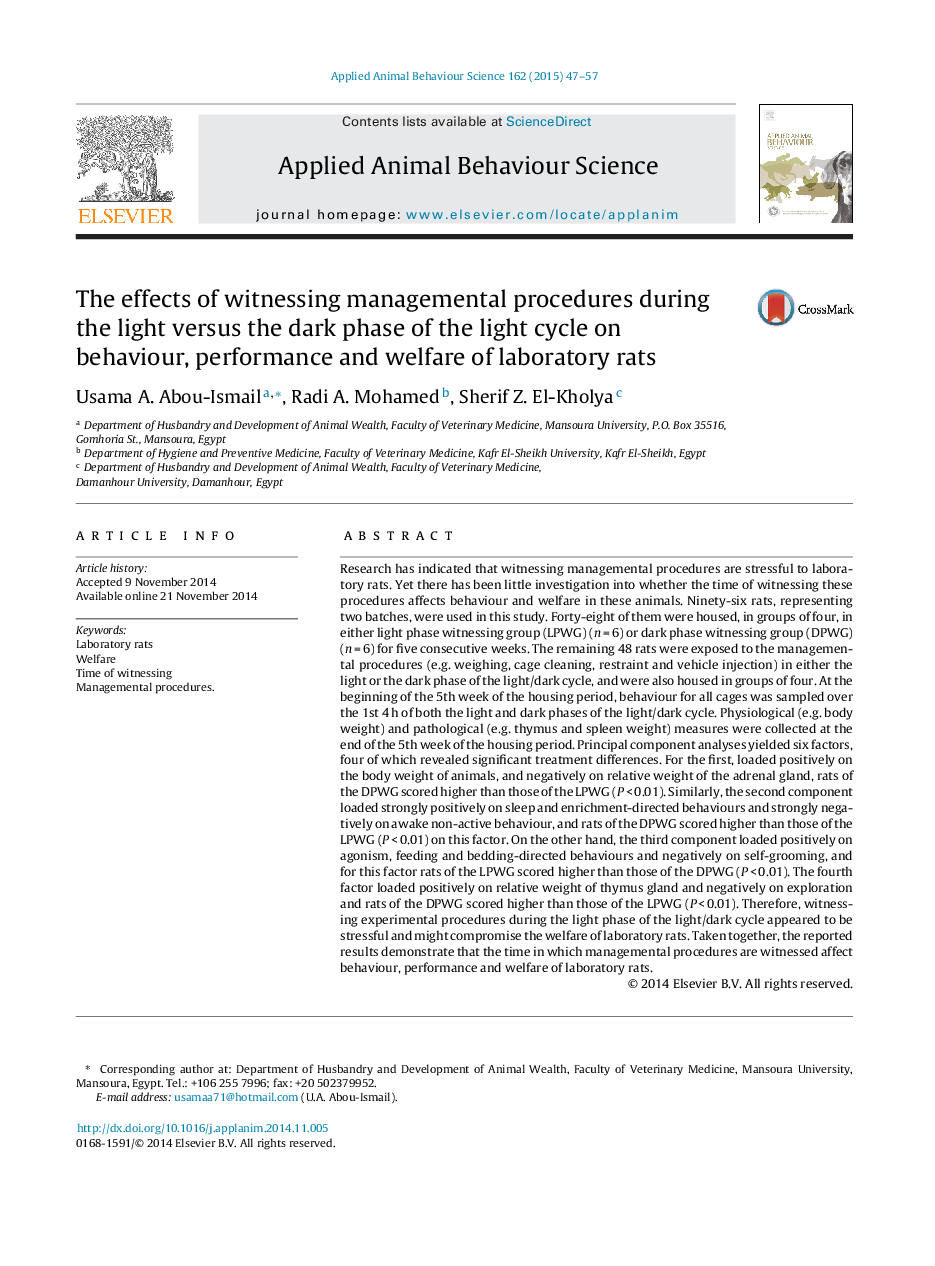| کد مقاله | کد نشریه | سال انتشار | مقاله انگلیسی | نسخه تمام متن |
|---|---|---|---|---|
| 6379571 | 1625344 | 2015 | 11 صفحه PDF | دانلود رایگان |
- We examined the effect of witnessing managemental procedures on laboratory rats.
- Behavioural, performance and pathological indicators of welfare were used.
- There is a circadian effect in response of nocturnal animals to stress.
- The time of witnessing managemental procedures affect welfare of laboratory rats.
- Witnessing is more stressful during light than during dark phase.
Research has indicated that witnessing managemental procedures are stressful to laboratory rats. Yet there has been little investigation into whether the time of witnessing these procedures affects behaviour and welfare in these animals. Ninety-six rats, representing two batches, were used in this study. Forty-eight of them were housed, in groups of four, in either light phase witnessing group (LPWG) (n = 6) or dark phase witnessing group (DPWG) (n = 6) for five consecutive weeks. The remaining 48 rats were exposed to the managemental procedures (e.g. weighing, cage cleaning, restraint and vehicle injection) in either the light or the dark phase of the light/dark cycle, and were also housed in groups of four. At the beginning of the 5th week of the housing period, behaviour for all cages was sampled over the 1st 4 h of both the light and dark phases of the light/dark cycle. Physiological (e.g. body weight) and pathological (e.g. thymus and spleen weight) measures were collected at the end of the 5th week of the housing period. Principal component analyses yielded six factors, four of which revealed significant treatment differences. For the first, loaded positively on the body weight of animals, and negatively on relative weight of the adrenal gland, rats of the DPWG scored higher than those of the LPWG (P < 0.01). Similarly, the second component loaded strongly positively on sleep and enrichment-directed behaviours and strongly negatively on awake non-active behaviour, and rats of the DPWG scored higher than those of the LPWG (P < 0.01) on this factor. On the other hand, the third component loaded positively on agonism, feeding and bedding-directed behaviours and negatively on self-grooming, and for this factor rats of the LPWG scored higher than those of the DPWG (P < 0.01). The fourth factor loaded positively on relative weight of thymus gland and negatively on exploration and rats of the DPWG scored higher than those of the LPWG (P < 0.01). Therefore, witnessing experimental procedures during the light phase of the light/dark cycle appeared to be stressful and might compromise the welfare of laboratory rats. Taken together, the reported results demonstrate that the time in which managemental procedures are witnessed affect behaviour, performance and welfare of laboratory rats.
Journal: Applied Animal Behaviour Science - Volume 162, January 2015, Pages 47-57
